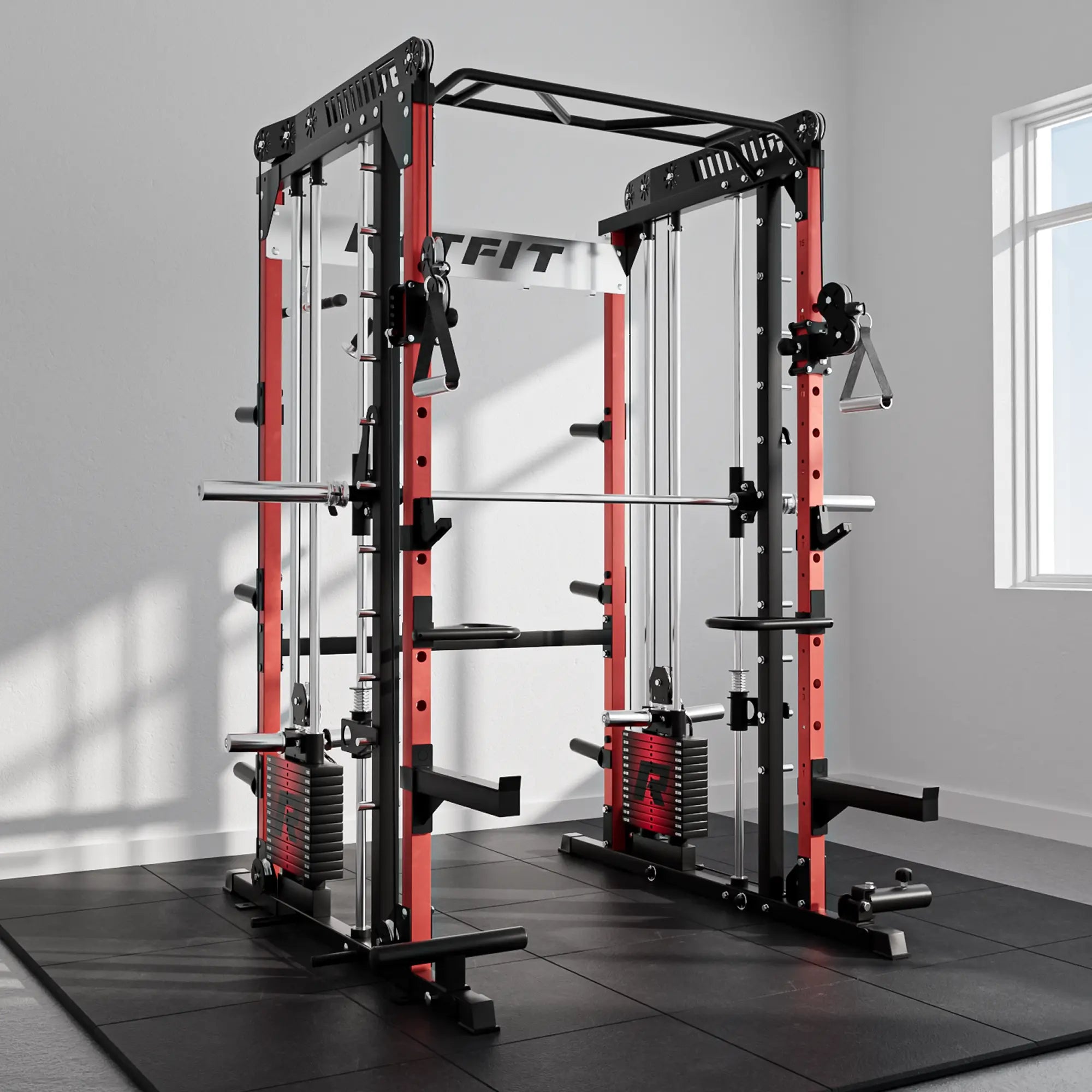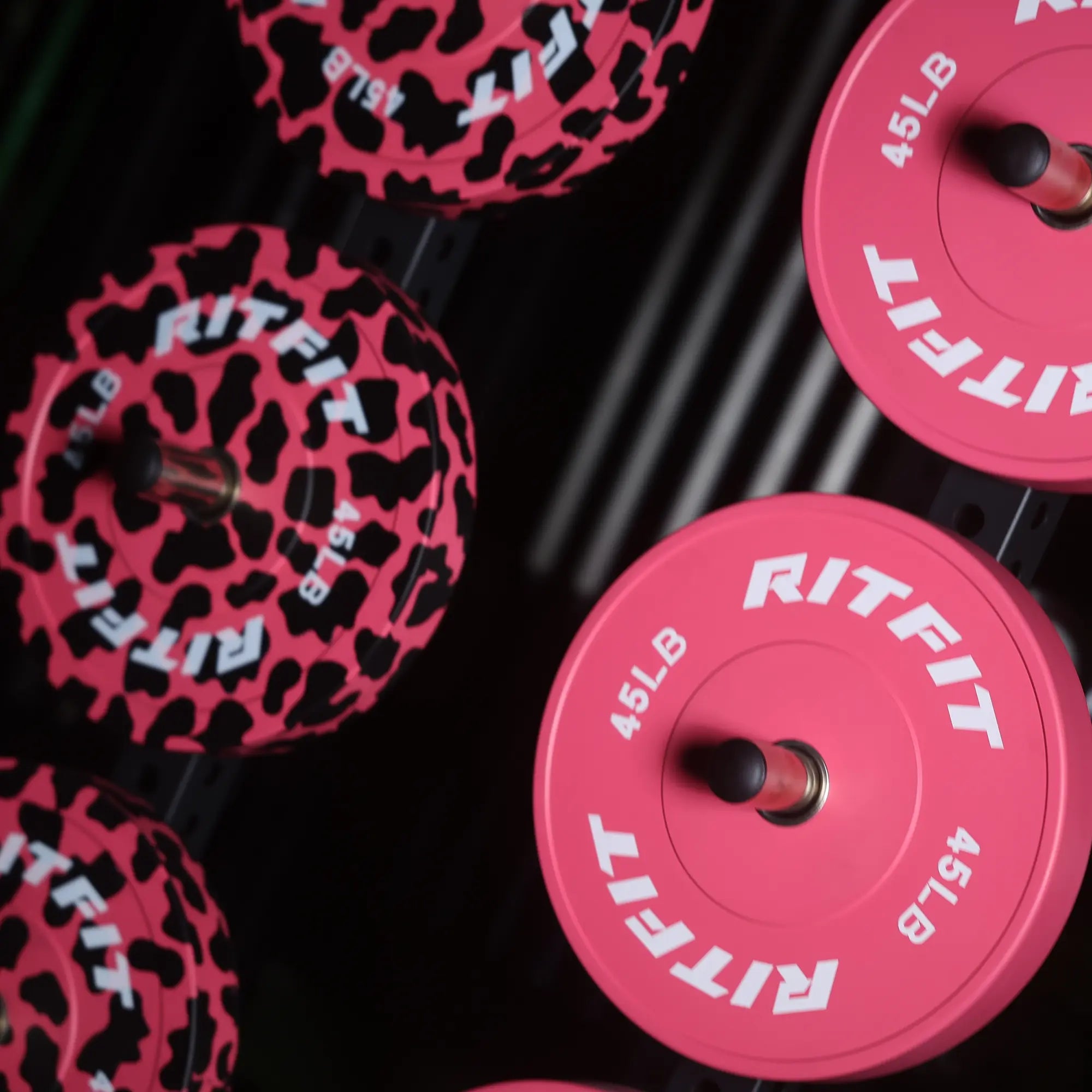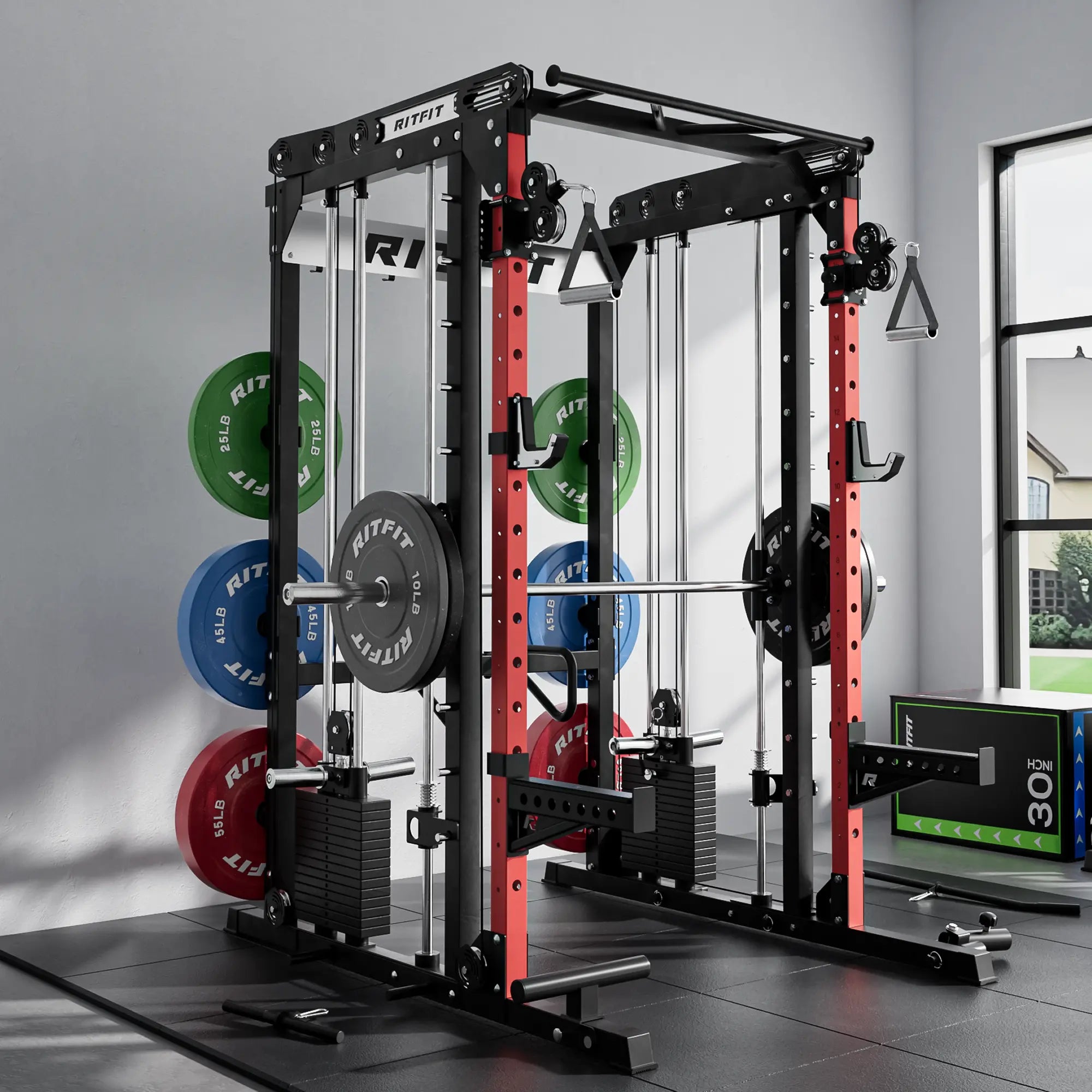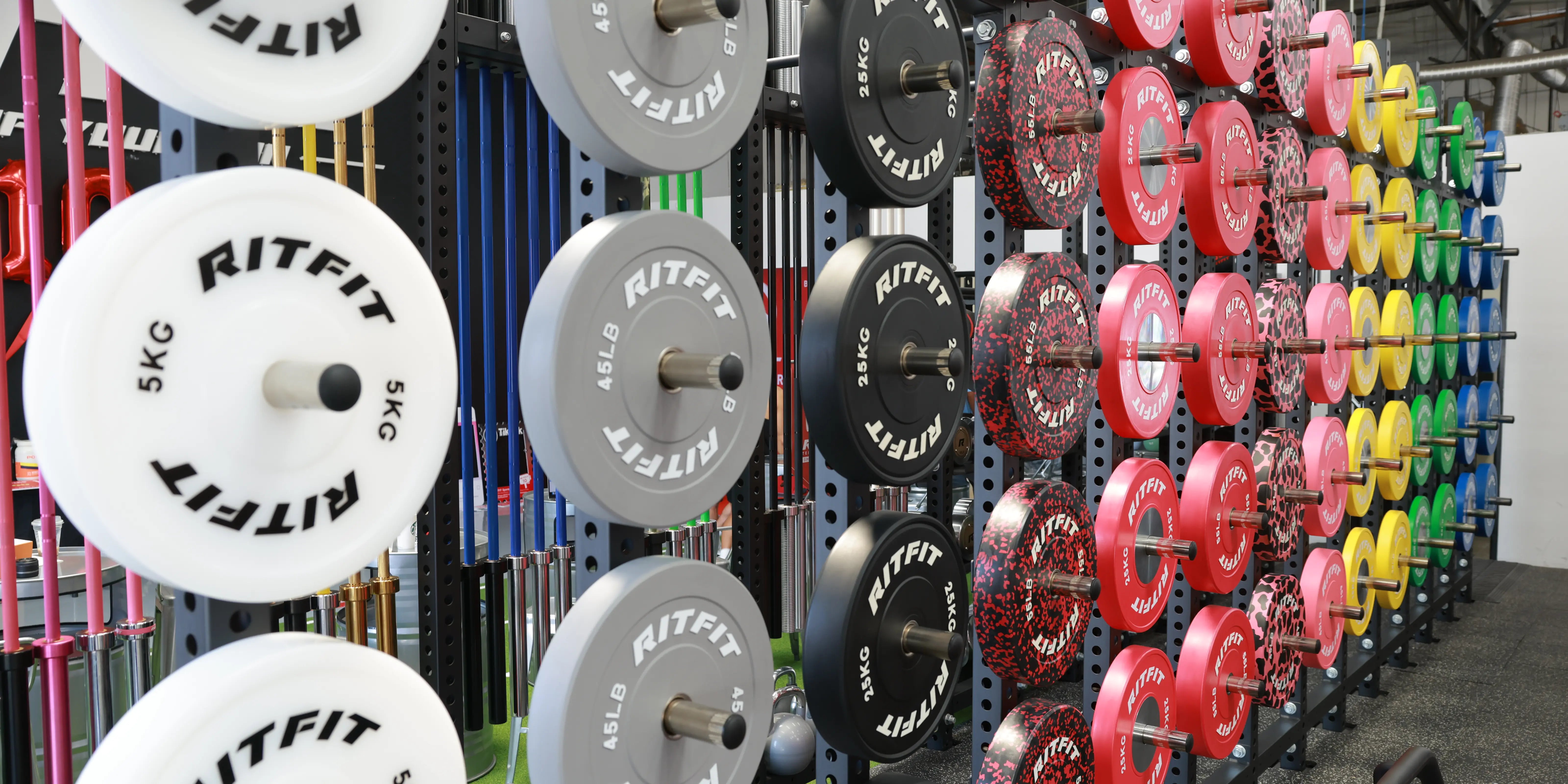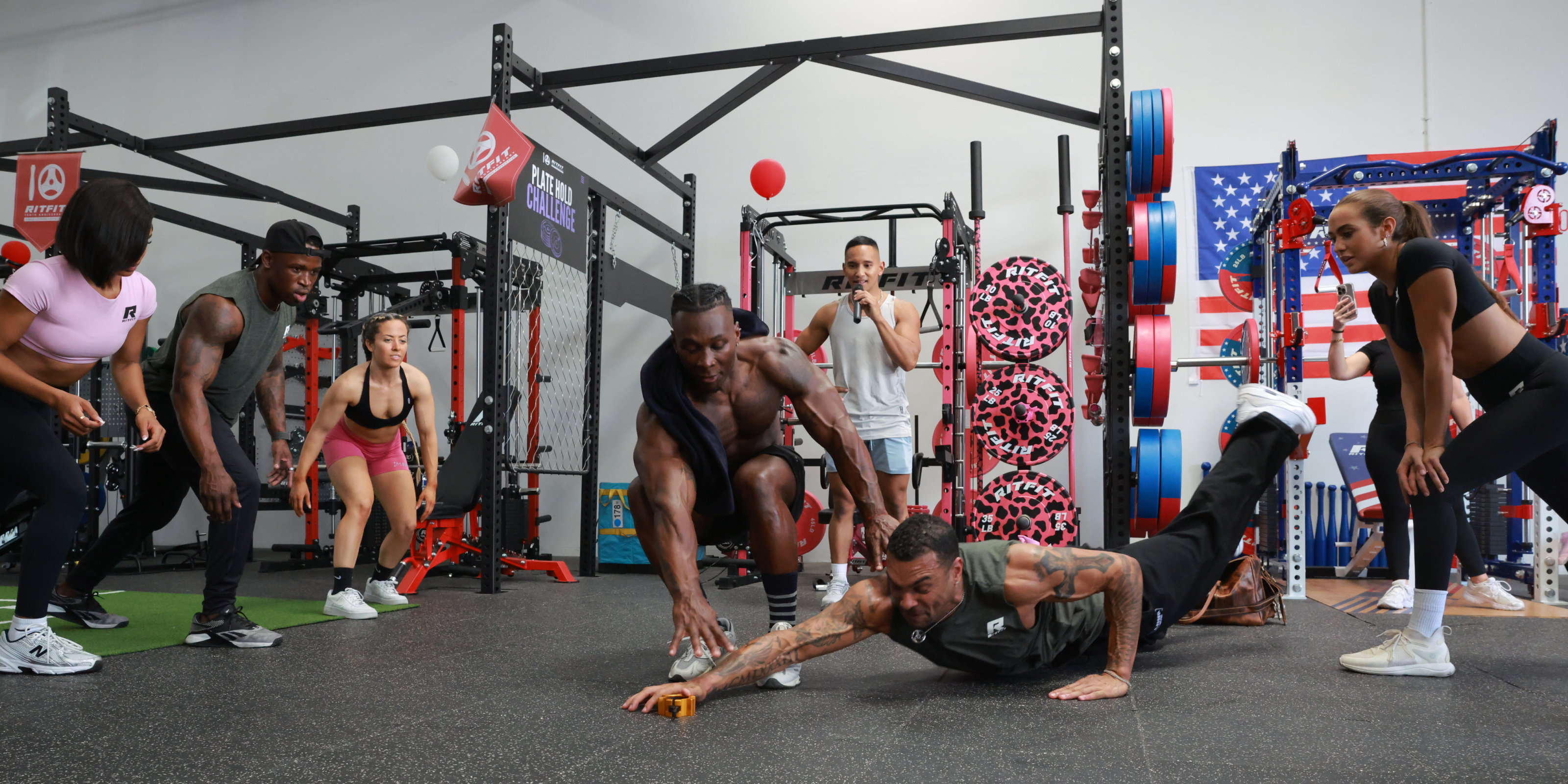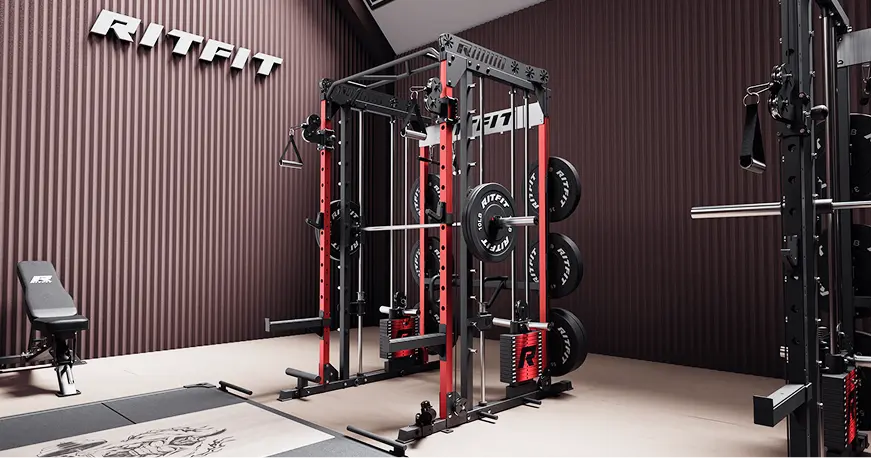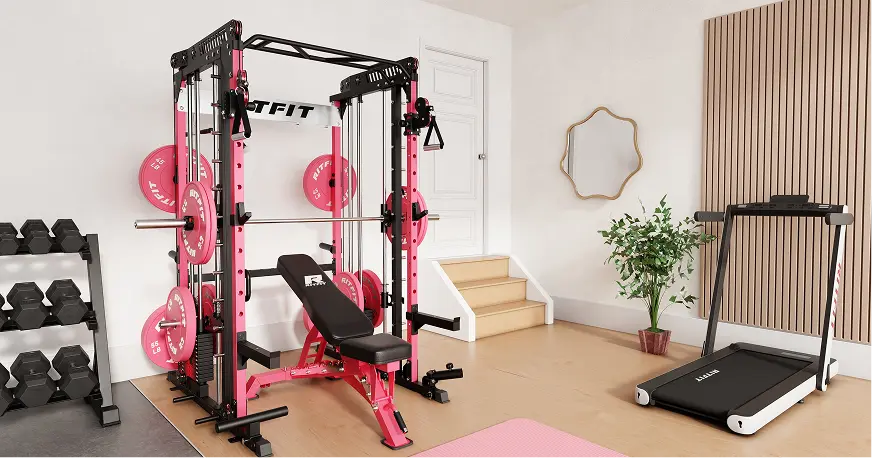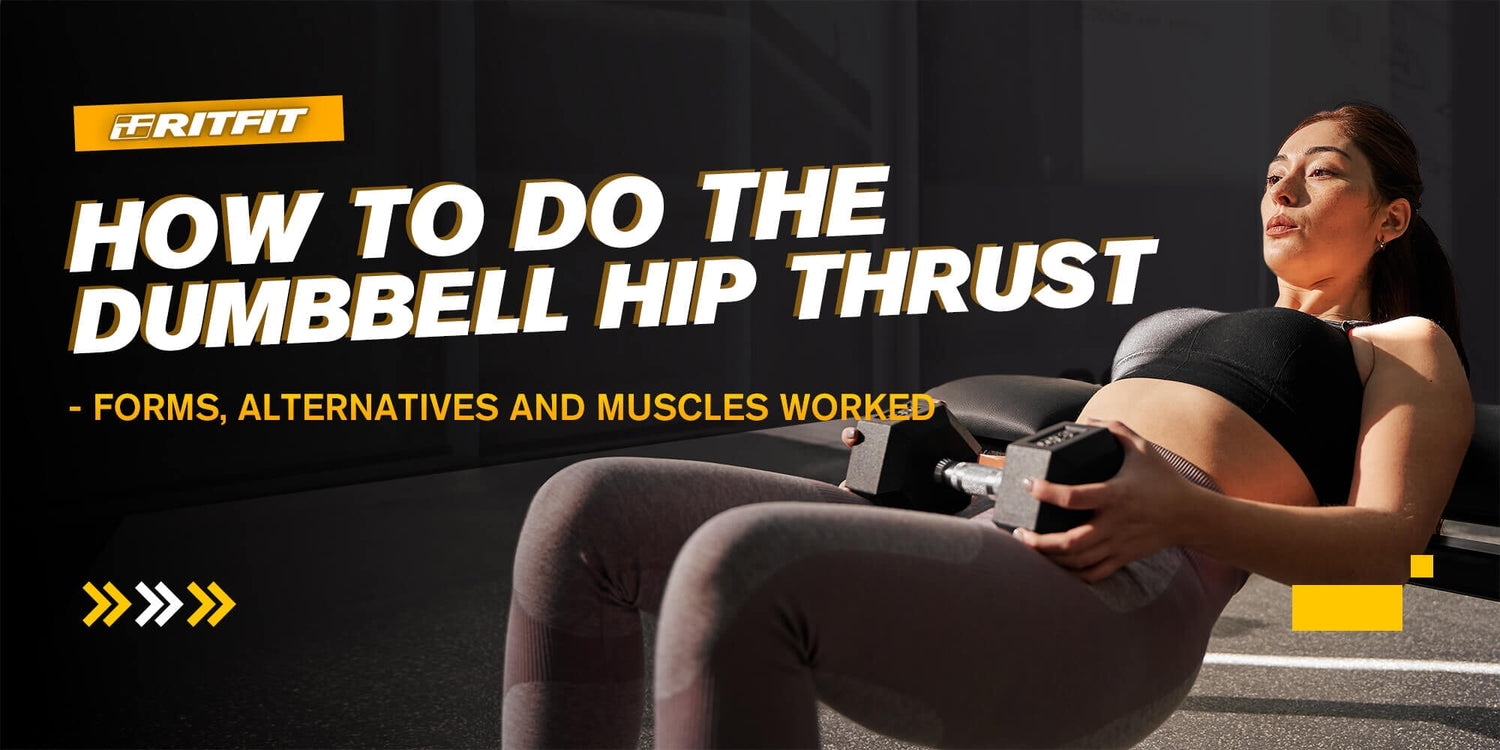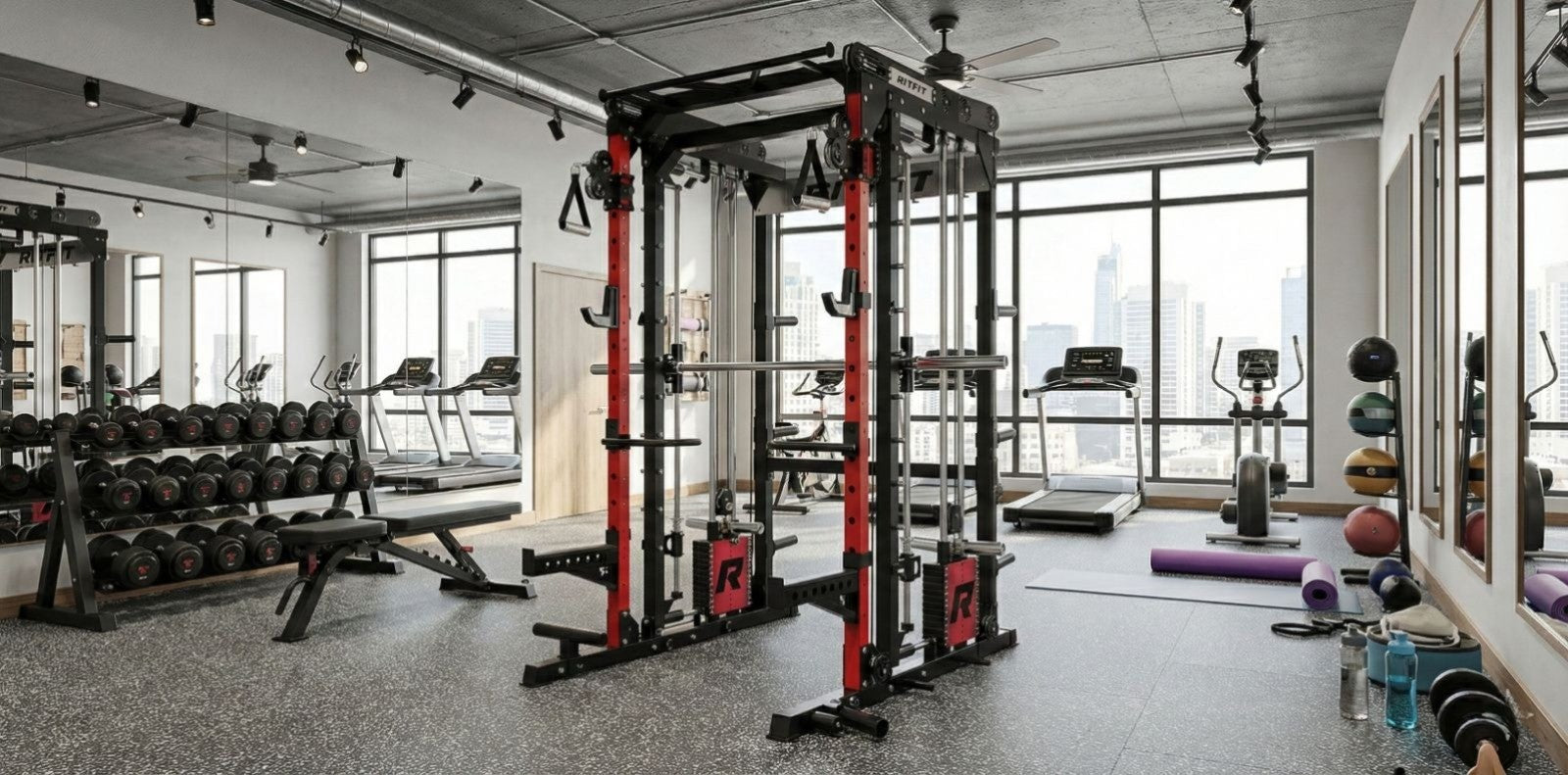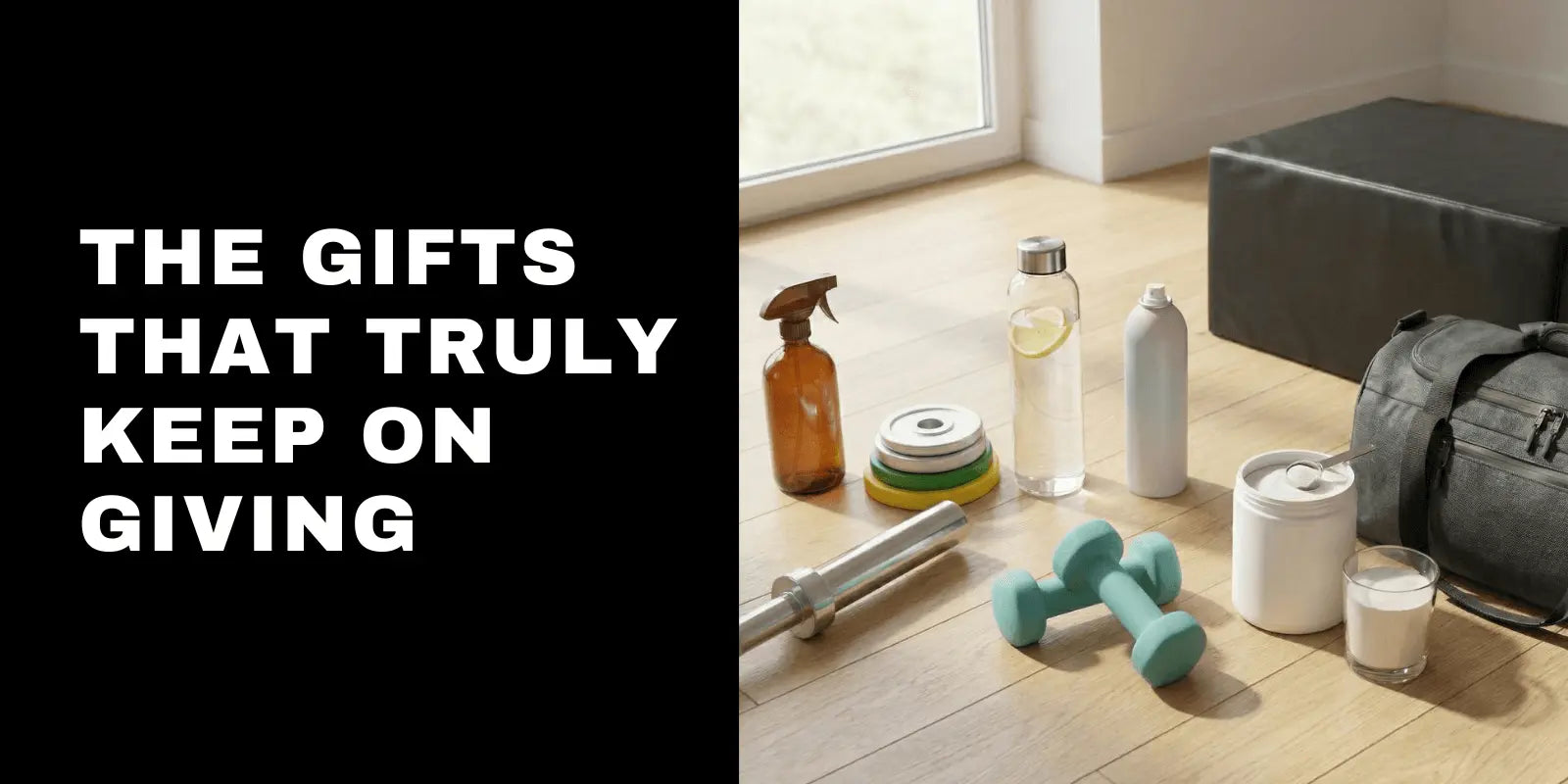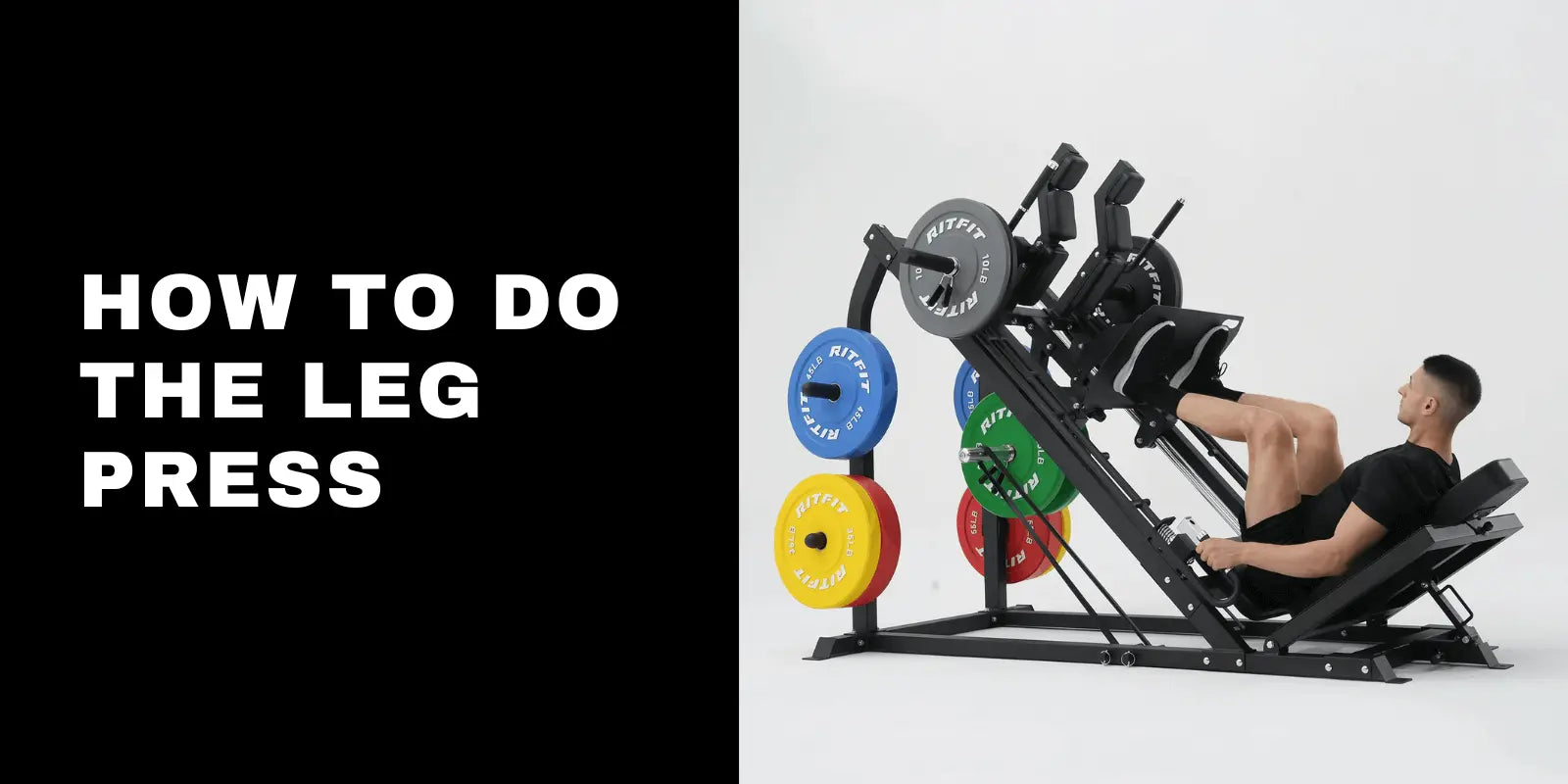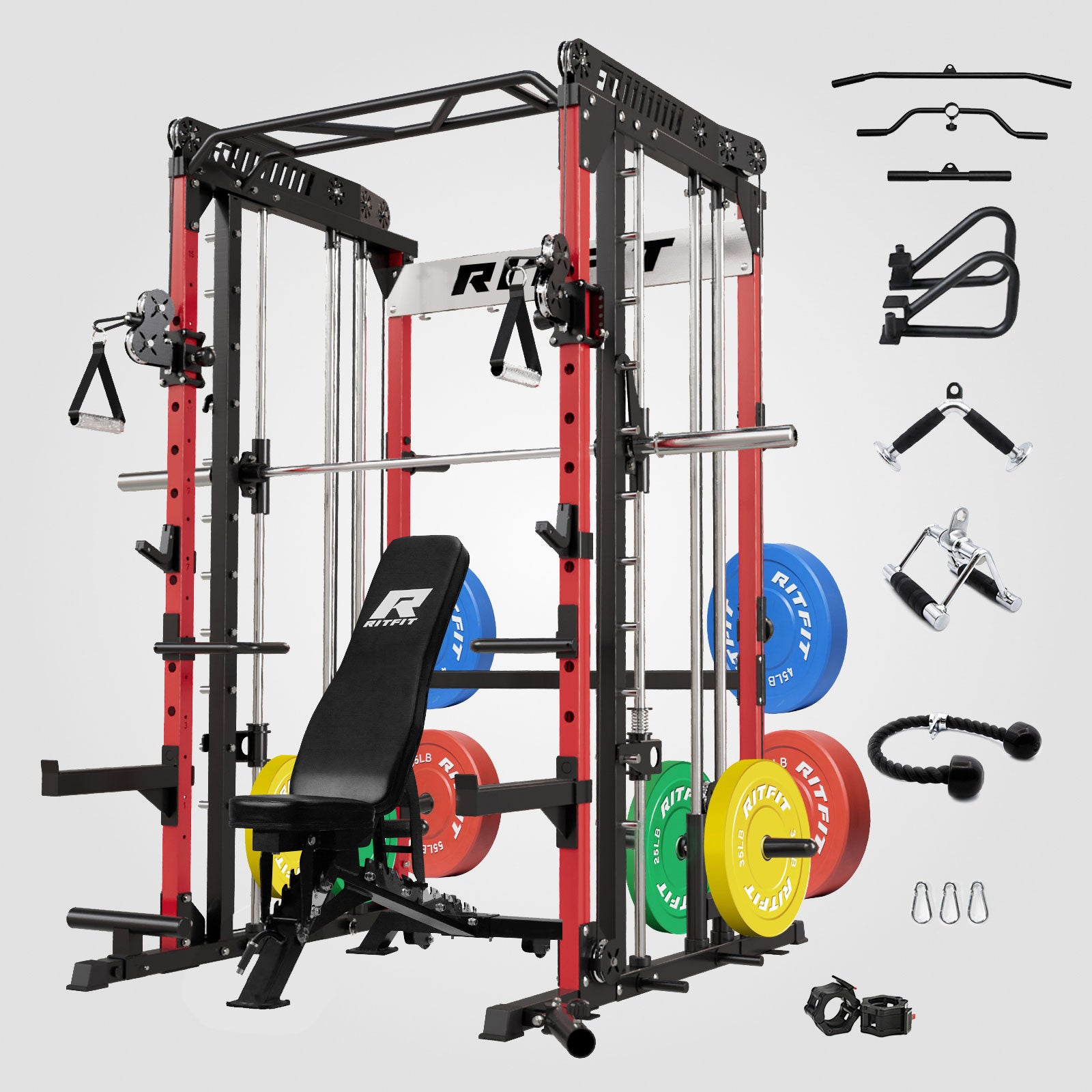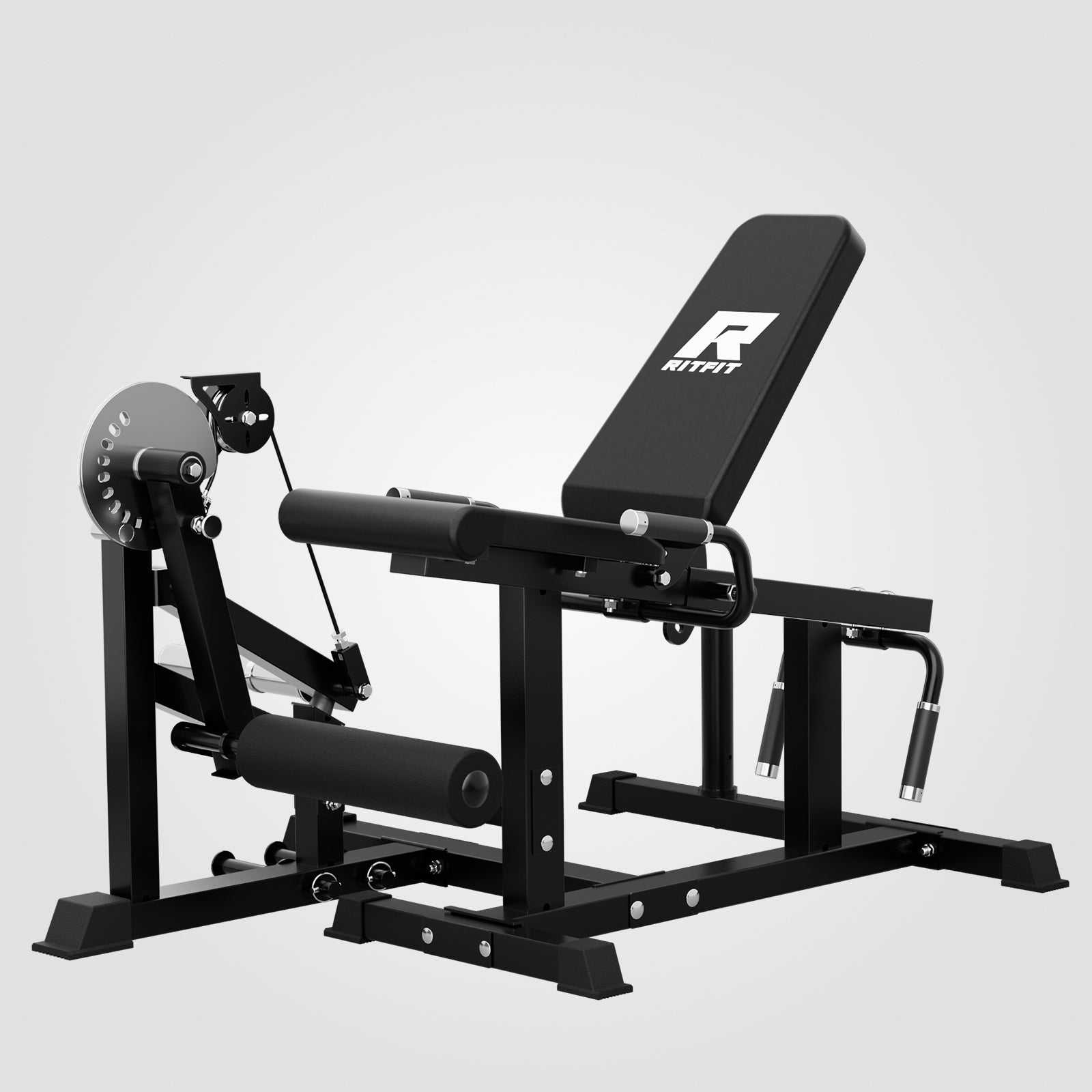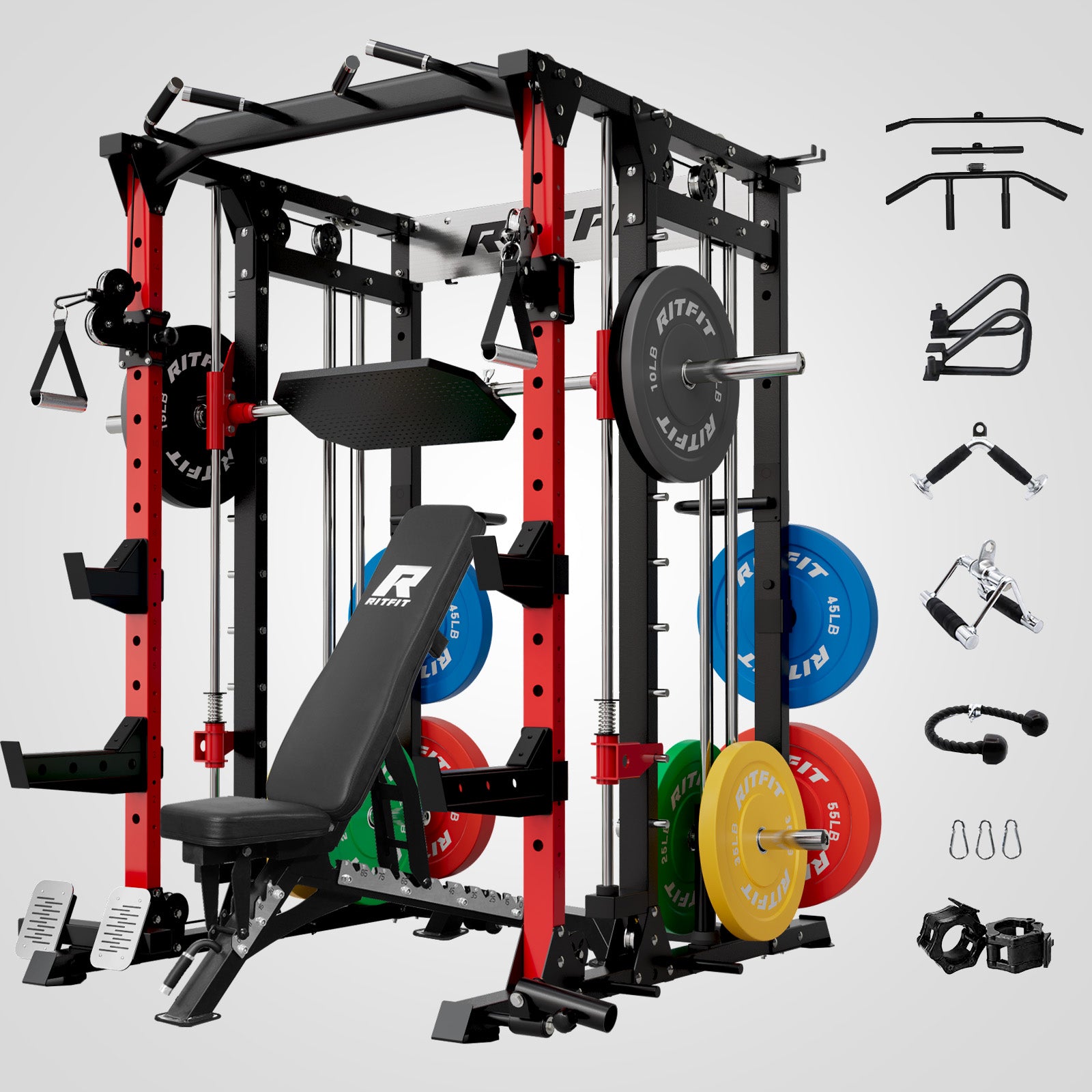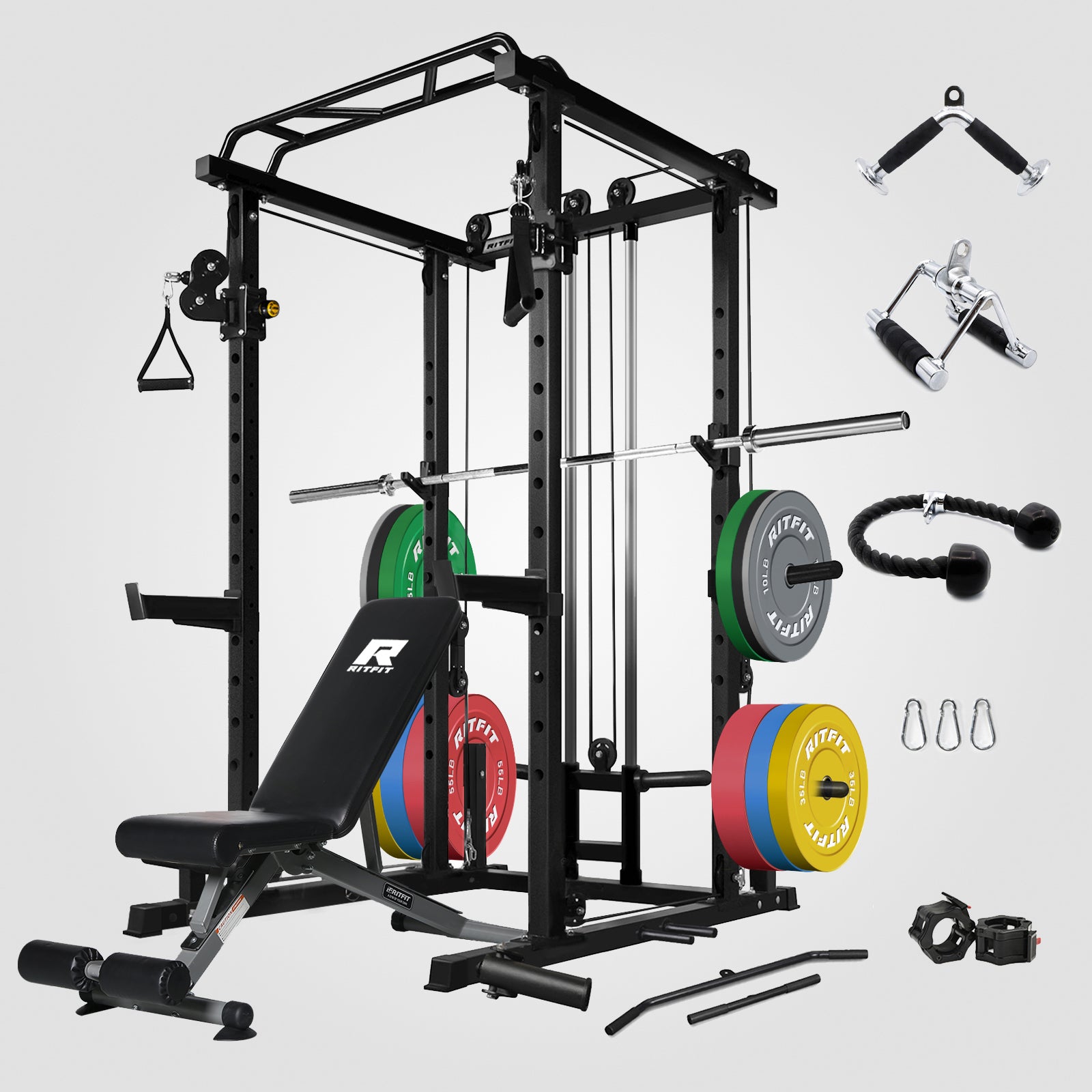Table of Contents
- What is a Dumbbell Hip Thrust?
- Equipment & Setup for Dumbbell Hip Thrusts
- How to Do a Dumbbell Hip Thrust (Step-by-Step)
- Muscles Worked in a Dumbbell Hip Thrust
- Common Dumbbell Hip Thrust Mistakes
- Benefits of the Dumbbell Hip Thrust
- Sample Dumbbell Hip Thrust Workout (Beginner-Friendly)
- Dumbbell Hip Thrust Variations
- Dumbbell Hip Thrust Alternatives
- Dumbbell Hip Thrust FAQs
If you spend most of your day sitting, your glutes are probably underused while your hip flexors and lower back do more work than they should. That combination often leads to tight hips, a sore lower back, and a flat, undertrained backside even if you already squat or deadlift.
The dumbbell hip thrust is one of the most effective ways to wake your glutes back up using minimal equipment. With just a bench and a pair of dumbbells, you can build stronger, rounder glutes at home or in a small gym space.
In this guide, you’ll learn exactly what the dumbbell hip thrust is, how to set up properly, step-by-step form cues, the muscles worked, common mistakes to avoid, key benefits, useful variations, and smart alternatives so you can plug it straight into your lower-body or glute-focused workouts.
What is a Dumbbell Hip Thrust?
The dumbbell hip thrust is a lower-body exercise where you place your upper back on a bench, your feet on the floor, and a dumbbell across your hips, then drive your hips upward into full extension.
It is a horizontally loaded exercise (like a hip hinge) instead of a vertically loaded one (like squats). Primarily, the dumbbell hip thrust trains your glutes, with secondary work for the hamstrings and quadriceps. Research indicates that the hip thrust elicits significantly higher mean and peak activation of the gluteus maximus compared to the back squat[1].
Compared to the barbell hip thrust, the dumbbell variation is easier to learn, easier to set up in a small space, and more comfortable for beginners who are still getting used to loading the hips.
Equipment & Setup for Dumbbell Hip Thrusts
- A sturdy flat or adjustable weight bench
- One medium to heavy dumbbell (or two lighter ones held together)
- A towel or hip pad to keep your hips safe
Position of the bench and body
- Sit on the floor with your upper back against the long side of the bench.
- When you lift your hips, the bottom of your shoulder blades should line up with the bench edge.
- Walk your feet out so that at the top position your knees are roughly at a 90-degree angle and your shins are vertical.
Dumbbell placement
- Place the dumbbell horizontally across your hip crease.
- Use a towel, pad, or folded mat between the dumbbell and your hips to avoid pressure on the pelvic bones.
- Keep both hands lightly on the dumbbell while you move it.
Weight to start
- If you're new to hip thrusts, start with just your body weight and then add a light dumbbell.
- You should only add weight when you can do every rep without losing your form or feeling pain in your lower back.
How to Do a Dumbbell Hip Thrust (Step-by-Step)
To do a strong and safe dumbbell hip thrust, follow these steps:
Step 1: Put your feet and upper back in place
Put your feet flat on the ground and sit on the floor with your upper back against the bench. Your feet should be about hip- to shoulder-width apart. Your toes can point out a little.
Step 2: Place the dumbbell
Gently roll the dumbbell into the crease of your hip or lay it across your lap. Put a towel or pad under it to make it more comfortable, and hold it in place with both hands.
Step 3: Pull your ribs in and brace your core.
Breathe in deeply, tighten your abs, and keep your ribs "down" so that your lower back stays neutral. Gently tuck your chin down as if you were holding an orange between your chin and chest.
Step 4: Push your hips up toward the ceiling
To raise your hips, push through your heels. Your knees should be bent about 90 degrees at the top, your torso and thighs should be in a straight line, and you should feel a strong squeeze in your glutes, not your lower back.
Step 5: Stop and squeeze
While actively squeezing your glutes, hold the top position for 1 to 2 seconds. Don't arch your lower back too much. Keep your core tight.
Step 6: Lower with care
Let the dumbbell pull your hips down and stretch your glutes as you slowly lower your hips toward the floor. Stop just before your glutes relax completely on the ground, and then do it again.
That’s one repetition. Aim for smooth, controlled reps instead of bouncing. If you feel the movement mostly in your hamstrings or lower back, adjust your foot position or reduce the load until your glutes are the main driver.
Quick Form Checklist
- Shins vertical at the top
- Ribs down, chin tucked
- No excessive lower-back arch
- Heels push into the floor, glutes squeeze at the top
Muscles Worked in a Dumbbell Hip Thrust
Glutes

Gluteus Maximus
Gluteus Medius
Gluteus Minimus
Hamstrings
Adductor Magnus
Erector Spinae
Quadriceps
Common Dumbbell Hip Thrust Mistakes
Mistake #1: Not Using the Full Range of Motion
Many lifters cut the range of motion short, either by not lowering their hips enough or by failing to reach full hip extension at the top. This significantly reduces glute activation.
Aim to lower your hips until your glutes are just above the floor, then drive up until your torso is in line with your thighs. If pain or tightness limit your range, shorten it slightly and gradually increase the depth.
Mistake #2: Wrong Foot Placement
Placing the feet too far forward shifts the emphasis toward the hamstrings and lower back, while placing them too close overloads the quads. Both options reduce gluteal involvement.
Check that your shins are vertical at the top position. If you feel the movement mostly in your quads, your feet may be too close. If you feel it in your hamstrings and lower back, your feet are probably too far away. Adjust until your glutes are clearly the main workers.
Mistake #3: Over-Arching the Lower Back
Overextending the lower back at the top of the rep is one of the most common and risky errors. It reduces glute recruitment and increases stress on the lumbar spine.
Think “ribs down, belt line slightly tucked” so your glutes, not your spine, finish the lift. If you feel sharp pain in your lower back, stop immediately and reassess your form or consult a qualified professional.
Benefits of the Dumbbell Hip Thrust
Stronger Glutes
The Gluteus maximus is the largest muscle group in the body that helps you extend the hip joints. By doing dumbbell hip thrusts, you train them extensively, making them stronger and bigger.
As we have already discussed, hip flexors are the antagonist muscles to your glutes. If they're stronger than the glutes, you might develop the anterior pelvic tilt (hollow back), causing pain and posture issues.
Enhanced Athletic Performance
Many athletic activities, such as sports, require energy and explosive speed/power bursts. You cannot achieve optimal athletic performance if your hamstrings, quadriceps, or glutes are weak. Dumbbell hip thrusts primarily target the glutes, but they also exert your hamstrings and quadriceps improving jumping, running, and many other athletic activities.
Better Core Stability
You must continuously keep your core muscles engaged during dumbbell hip thrusts for stability and to avoid lower back arch. It results in stronger core muscles, improving overall stability and balance.
Injury Prevention
Since the glutes are the strongest and the largest muscles in your body, strengthening them is crucial for preventing injuries that result from muscle weaknesses. Therefore, activating the glutes regularly is important if you want more for less and to prevent injuries.
Dumbbell hip thrust is an excellent exercise for contracting and extending your glutes by loading them at an angle. Glutes support a lot of movement in our body, and their weakness can result in easily preventable injuries.
Flexible & Adaptable
Dumbbell hip thrust is a highly adaptable and flexible exercise that can be performed anywhere, anytime. Although most people do it in the gym, that's not a requirement. You can do it anywhere you want if you have the right technique and a pair of dumbbells.
Sample Dumbbell Hip Thrust Workout (Beginner-Friendly)
Here’s a simple way to plug hip thrusts into a lower-body or glute-focused training day:
- Glute Bridge (bodyweight) – 2 sets × 12–15 reps (warm-up)
- Dumbbell Hip Thrust – 3 sets × 8–12 reps (main lift)
- Single-Leg Dumbbell Hip Thrust – 2 sets × 8–10 reps per leg
- Romanian Deadlift (dumbbells) – 3 sets × 8–10 reps
- Side-Lying Clamshells or Banded Side Steps – 2 sets × 15 reps per side
Train this session 1–2 times per week, leaving at least 48 hours between heavy glute sessions to recover. Choose loads that challenge you while still allowing clean form on every rep.
Dumbbell Hip Thrust Variations
Dumbbell hip thrust can be performed in different variations, which we'll discuss here.
Single-leg Dumbbell Hip Thrust
The traditional dumbbell hip thrusts can be modified into a single-leg variation to train one leg at a time. It improves stability and balance by focusing on one leg instead of both, making it an excellent variation for beginners. Here's how to perform a single-leg dumbbell hip thrust:
- Lie down with your feet flat on the ground.
- Place the dumbbell on one lap and extend one leg in front of you.
- Lift your hip off the ground through your heel while keeping the other leg and shoulder on the ground.
- Squeeze your glutes on top for a second and bring yourself back down to the starting position.
Banded Dumbbell Hip Thrust
Resistance bands are great for increasing the intensity of the exercise and gaining better control over the movement. Here's how you can do a banded dumbbell hip thrust:
- Wrap a band around your knees and lie on the ground with flat feet.
- Place a dumbbell on your lap and lift your hip off the ground by driving through your heels.
- Engage your glutes and abductors by pushing your knees against the band.
- Hold the top position for a second before coming down slowly.
Isometric Hold Dumbbell Hip Thrust
Having an isometric hold on top of your movement can improve your gains. It enhances strength and endurance significantly.
- Put a dumbbell on your lap and lie with flat feet on the ground.
- Push through your heels to lift yourself off the ground.
- In an isometric movement, you must hold the top position as long as possible before coming down.
Dumbbell Hip Thrust Alternatives
Dumbbell hip thrusts are great for your glutes. However, they do not focus on the hamstrings and quadriceps as much. Thankfully, there are alternatives for adding variety to your workout routine and targeting different muscles.
Barbell Hip Thrust
As the name suggests, a barbell hip thrust uses a barbell instead of a dumbbell. As a barbell is heavier, it allows you to exert more and is an excellent exercise for those who have spent some time working out.
To perform a barbell hip thrust:
- Rest your upper back against a bench, place a barbell across your hips, and hold it with your hands.
- Push your heels off the ground to squeeze your glutes on top.
- Keep your back straight & knees in line with your feet.
- Hold the top position momentarily and squeeze your glutes before coming down slowly.
Glute Bridge
Glute bridge is another exercise for training your glutes, hamstrings, and core.
Here's the right way to perform a glute bridge:
- Lie on the ground with flat feet and arms on your sides.
- Lift your hip off the ground with heels and squeeze your glutes on top.
- Hold it there for a second and lower yourself to the starting position.
You can perform glute bridges without weights, which makes them an excellent choice for everyone.
Romanian Deadlift
It is a compound exercise that works your hamstrings, glutes, and lower back.
To perform a Romanian deadlift:
- Stand on your feet shoulder-width apart and hold dumbbells in both hands.
- Keep your back straight and core engaged, and lower the weight towards the ground.
- Always keep weights close to your body and push through heels to bring yourself back up to the original position.
Step-ups
Step-ups are another alternative exercise for the hamstrings and glutes.
Here's how to perform them:
- Stand in front of a bench or step while holding a dumbbell in each hand.
- Drive through your heel to step onto the bench or the step.
- Push your other foot up to meet the first one and step down to the original position.
Lunges
Lunges are another popular alternative to dumbbell hip thrusts and can be performed with or without weights.
- Stand shoulder width apart and hold dumbbells in each hand.
- Step forward while bending your knees and lowering your body towards the ground.
- The front knee should be aligned with the ankle, and the back knee should be slightly above the ground.
- Use the front heel to stand back up and do the process with the other leg.
Dumbbell Hip Thrust FAQs
Q: How to choose the right weight of dumbbell hip thrust?
There is no standard weight for dumbbell hip thrusts, as people have varying endurance levels and experience. However, you should always start with the lowest possible weight if you're a beginner and gradually move towards heavier weights.
Q: What are the frequency and sets/reps recommendations?
The frequency and sets/reps for dumbbell hip thrusts depend upon your goals.
- For Strength: 5 sets of 5 reps with a heavy load.
- Building Muscle Mass: 3-5 sets of 8-12 reps with moderate to heavy weight.
- For Endurance: 2-3 sets of 15-20 reps with moderate load.
Q: How to progress the dumbbell hip thrust for continued improvement?
You can progress the dumbbell hip thrust by increasing the weight or the exercise intensity. If you have access to heavier weights, use them, and you'll progress gradually. If you don't have access to more weights, add more repetitions & sets, increase the range of motion, and shorten rest periods.
Summary
Glutes are your body's biggest muscles; training them is indispensable for a well-rounded physique. Well-trained glutes, hamstrings, and quadriceps look good and add significant amounts of functionality and strength to your body. Dumbbell hip thrust is one of the best ways to train all of them, especially the glutes.
Depending on your situation, you can try different variations of the dumbbell hip thrust to get the maximum out of it. Just ensure you're not committing common mistakes, and you are on your way to a toned and strong physique!
References
- Contreras B, Vigotsky AD, Schoenfeld BJ, Beardsley C, Cronin J. A Comparison of Gluteus Maximus, Biceps Femoris, and Vastus Lateralis Electromyographic Activity in the Back Squat and Barbell Hip Thrust Exercises. J Appl Biomech. 2015;31(6):452-458. doi:10.1123/jab.2014-0301

